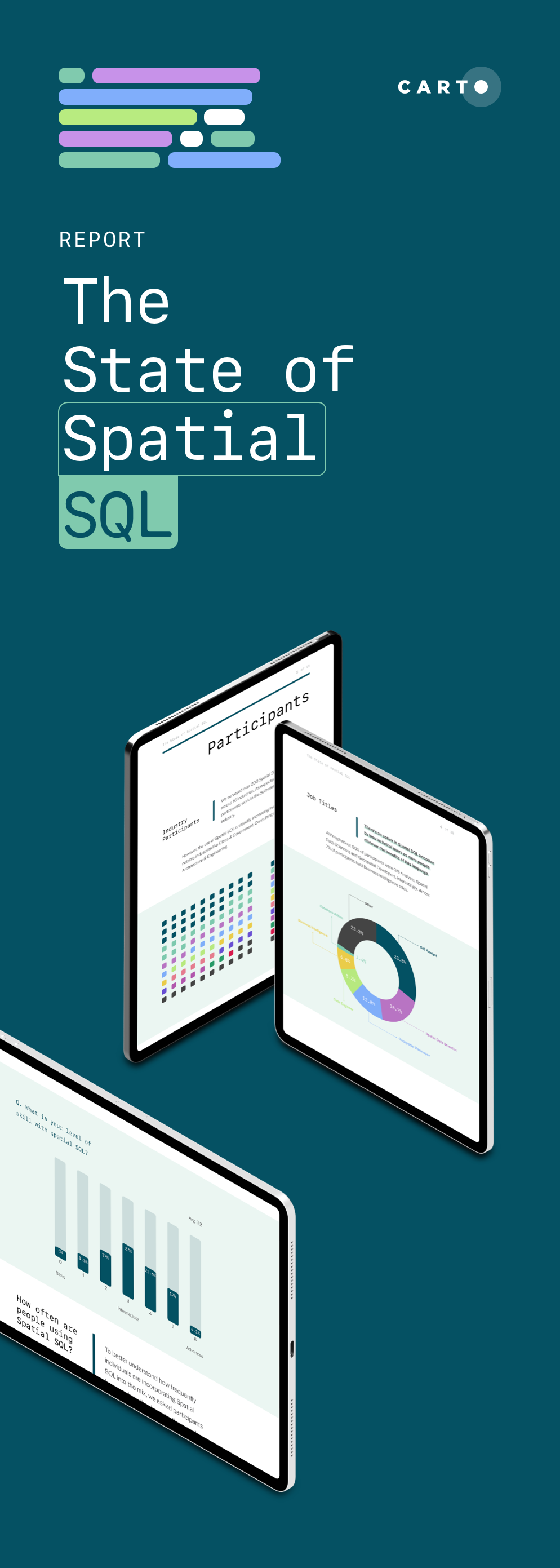Report
The State of Spatial SQL
New insights on the status of Spatial SQL, including what to expect as adoption continues to gain momentum in 2022.
Traditionally, spatial analysis has been behind the rest of the analytics world when it comes to features and capabilities. However, thanks to the rise of spatial cloud computing, and specifically the growing adoption of Spatial SQL, this is no longer the norm.
Spatial SQL is a rising star in GIS, and for good reason. Although traditional SQL in itself is a helpful tool for managing large geographic databases, Spatial SQL offers a number of unique functionalities and advantages that support faster geospatial data collection and analysis.
To gain better insight into the rise and impact of Spatial SQL in the GIS space, we invited professionals using spatial analysis from a wide range of organizations around the world to participate in the State of Spatial SQL Survey 2022.
In this report, you’ll discover the…
- Reasons why more GIS Analysts, Spatial Data Scientists, and Geospatial Developers are transitioning to cloud-based Spatial SQL databases and warehouses.
- Top benefits of using Spatial SQL for spatial analysis.
- Notable industries and use cases where Spatial SQL is most prevalent.
…and much more.
